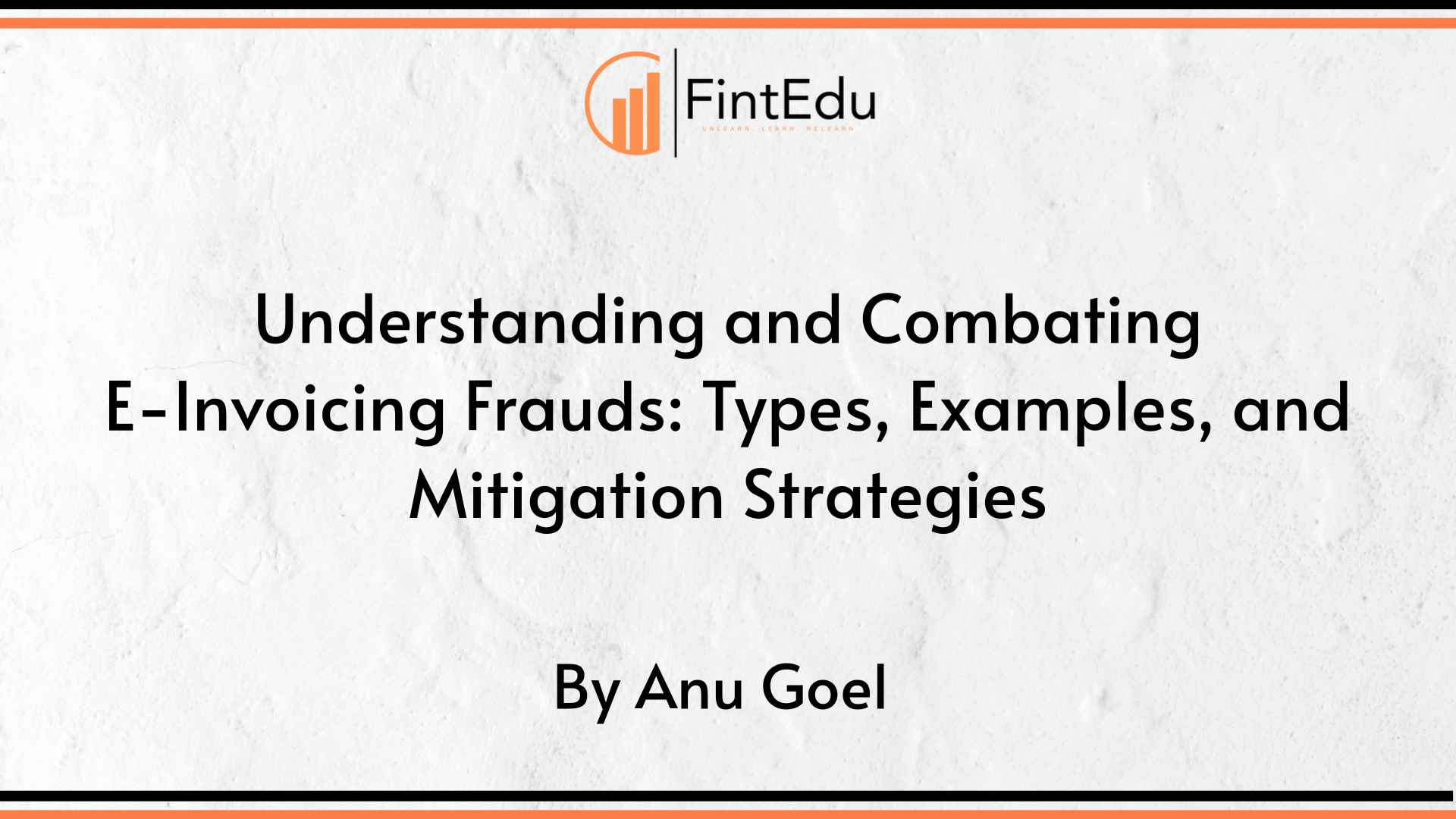LISTEN TO THIS ARTICLE
E-invoicing has revolutionized the way businesses handle transactions, offering increased efficiency and reduced paperwork. However, this digital transformation has also opened the door to various types of frauds. Understanding these frauds and implementing effective mitigation strategies is crucial for safeguarding your business. This article delves into common types of e-invoicing frauds, illustrated with real-world examples, and provides actionable measures to combat them.
Common Types of E-Invoicing Frauds
1. Phishing and Spoofing
- Phishing: Fraudsters send fake emails that appear to be from legitimate suppliers, requesting updates to bank account details or asking recipients to click on malicious links.
- Spoofing: Fraudsters create fake email addresses that closely resemble legitimate ones to deceive recipients into paying invoices to fraudulent accounts.
Example: An employee receives an email that seems to be from a known supplier, requesting an update to bank account details. Believing the email to be legitimate, the employee updates the payment information, sending the next payment to the fraudster's account instead of the supplier's.
2. Invoice Manipulation
- Invoice Duplication: Submitting the same invoice multiple times to receive multiple payments.
- Inflated Invoices: Altering the invoice amount to a higher value than the actual amount due.
Example: An accounts payable clerk duplicates a legitimate invoice and submits it for payment. The system processes the duplicate invoice, resulting in double payment. Alternatively, an employee might alter an invoice amount from $10,000 to $15,000, pocketing the extra $5,000 once the payment is made.
3. False Invoicing
- Fake Suppliers: Creating fictitious suppliers and submitting fake invoices for goods or services never delivered.
- Non-existent Transactions: Issuing invoices for transactions that never took place.
Example: A fraudster sets up a fake company with a name similar to a legitimate supplier, then submits fake invoices for services never rendered. If these invoices are not thoroughly verified, the company may end up paying for nonexistent services or goods.
4. Supplier Fraud
- Collusion: Suppliers collude with employees within the company to submit fraudulent invoices and share the proceeds.
- Unauthorized Changes: Suppliers or employees make unauthorized changes to invoice details, such as bank account numbers, to redirect payments.
Example: A supplier colludes with an internal employee to submit inflated invoices. For instance, a supplier provides goods worth $50,000 but submits an invoice for $70,000. The internal employee approves the invoice, and the supplier shares the extra $20,000 with the employee.
5. Account Takeover
Example: A fraudster gains access to a supplier's e-invoicing account through a phishing attack. They change the bank account details in the supplier’s profile to their own, redirecting subsequent payments.
6. Social Engineering
Example: A fraudster calls an employee in the accounts department, posing as a senior executive. They instruct the employee to urgently process a payment, providing a plausible but false reason. The employee processes the payment without proper verification.
7. Cyber Attacks
- Malware: Introducing malware into the e-invoicing system to alter invoices or capture sensitive information.
- Ransomware: Locking access to e-invoicing systems and demanding a ransom for their release.
Example: A fraudster sends an email with a malware attachment to an employee in the finance department. When the attachment is opened, the malware compromises the e-invoicing system, altering bank account details on all outgoing invoices and redirecting payments to the fraudster’s account.
8. Internal Fraud
Example: An employee in the accounts payable department exploits their access to create fake invoices from non-existent suppliers, then approves them for payment, transferring funds to accounts they control.
9. Fraudulent Chargebacks
Example: A customer orders products worth $20,000 and receives them. They then claim to their bank that they did not receive the products, requesting a chargeback. The bank processes the chargeback, and the company loses both the goods and the payment.
Mitigation Strategies
1. Verification Processes: Independently verify supplier information and bank account details before making any payments.
2. Two-Factor Authentication (2FA): Implement 2FA for accessing e-invoicing systems to ensure that only authorized personnel can access them.
3. Regular Audits: Conduct regular internal and external audits of invoices and payment processes to detect anomalies early.
4. Employee Training: Train employees to recognize phishing attempts, spoofing, and other social engineering tactics.
5. Secure Systems: Use advanced cybersecurity measures such as firewalls, encryption, and anti-malware software to protect e-invoicing systems.
6. Segregation of Duties: Ensure responsibilities for creating, approving, and paying invoices are divided among different employees to minimize fraud risk.
By understanding these types of fraud and implementing robust mitigation strategies, businesses can significantly reduce the risk of e-invoicing fraud and ensure the integrity of their financial transactions.
Disclaimer: Content posted is for informational and knowledge sharing purposes only, and is not intended to be a substitute for professional advice related to tax, finance or accounting. The view/interpretation of the publisher is based on the available Law, guidelines and information. Each reader should take due professional care before you act after reading the contents of that article/post. No warranty whatsoever is made that any of the articles are accurate and is not intended to provide, and should not be relied on for tax or accounting advice.



